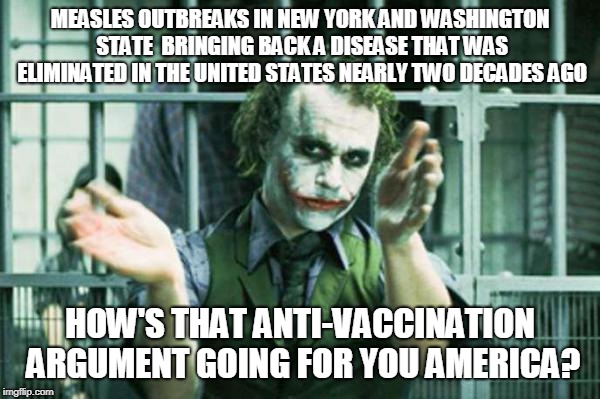You have probably been hearing a lot in the news lately regarding measles, for which there have been multiple outbreaks recently. This is of course confusing considering several years ago we were on the verge of eradicating measles due to our high vaccination rates. In the last several years there have been outbreaks in New York, Washington, Texas, Illinois, in California. We actually just had our first report of it at Kaiser in San Jose and the person is in the intensive care unit and they are in the process of tracking down everyone who could've been exposed.
Many people don't understand how serious this is. Our infectious disease specialists consider measles the most contagious disease out there. Something like 90% of people who come in contact with the virus will become sick from it and it is airborne and can stay in the air for about an hour after somebody has put it into the air. That is an extraordinarily contagious virus especially if you consider someone being sick in a large crowd or on a mass transit system. This is part of the reason why there was an outbreak at Disneyland.
It usually takes 8-12 days after becoming exposed to start having symptoms and you can be contagious for 4 days before and after you have the typical measles rash, so this is very easy to catch from someone as they may not seem sick. Most people also get a high fever as well as a cough and runny nose and pinkeye along with it when they do show symptoms. Measles also has a high rate of more severe complications such as ear infections and diarrhea and life-threatening ones such as pneumonia and brain infection or encephalitis. You do not want any part of any of this.
Like most vaccinations though, the people who benefit most from you getting the vaccination are not necessarily you. The goal is to keep you from transmitting these contagious things to people with weakened immune systems such as those with medical conditions, the elderly, people undergoing cancer treatments and also pregnant women, who can have devastating complications both to the mother and baby if they catch measles.
The CDC considers all adults born before 1957 to have a natural immunity due to probably being exposed to it as a child. Many other people received childhood vaccinations and have immunity as well. Staying up-to-date on your immunity status and her vaccinations are the most important thing to help keep you and everyone else safe from this condition. Typically if you do not know if you had the vaccinations as a kid, we can check your blood titers to see if you have it. We can also just give you a booster of the MMR vaccine.
If you are interested in getting tested to see if you have immunity or in getting the vaccinations, please let me know. You can learn much much more on the CDC website as well.
